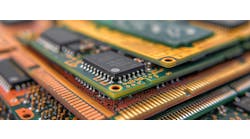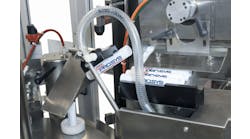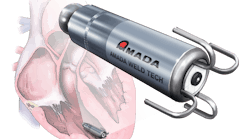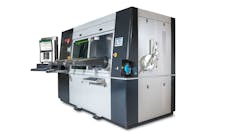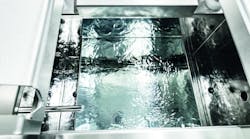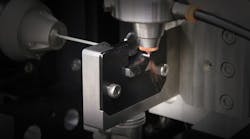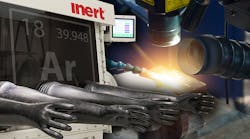Latest from Learning Center
Medical Welding: The Challenges of Titanium Casings
The demand for medical implantable devices (MIDs) continues to grow at a dramatic pace, driven by technological advancements, wider application to diverse clinical needs, increasing incidence of cardiovascular diseases, and an expanding geriatric population, among other factors. Early pacemakers, for example, had a battery life of only three hours. Now, more than a million pacemakers are implanted annually, each designed to function 20 years or longer.
To respond to these developments, manufacturers must use new tools and techniques to scale up production of ever smaller and more sophisticated devices with durable, hermetic seals, while maintaining stringent quality standards. The essential process of laser welding of titanium casing presents especially difficult challenges.
Laser Welding for Hermetic Sealing
Laser welding plays a critical role in the manufacturing of medical implantable devices. While many of the internal components of MIDs can be joined by soldering, brazing or welding, the entire device is often packaged in two titanium parts (shells), with laser welding serving as the preferred method for hermetically sealing the two shells. These joints are often referred to as "helium leak tight,” meaning they will pass a leak test using helium gas.
In addition, laser welding is also used to hermetically seal internal components of more complex devices, such as pumps, pressurized gas cylinders, and fluid containers. The number of welds varies according to the layout of the device, but a single infusion pump, for example, can require 40 different welds.
The closing of the titanium shells has traditionally been performed by seam sealing with Pulsed Nd-YAG lasers. A continuous-wave (CW) laser is not used in order to avoid transferring too much heat inside the device.
Before the seam sealing can take place, the two shells must be positioned, clamped, and pre-tacked with small laser welds for a temporary or “green strength” fixation. The system required for this pre-tacking is known as a "laser pre-tacker".
Argon Atmosphere
When sealing titanium shells, not only is the hermeticity of the package important but also the specified internal atmosphere of the welded device must be guaranteed because it will be permanently contained within the device.
For pacemakers, a dry argon atmosphere is preferred, allowing the titanium to be laser welded in an inert atmosphere. Argon is also suitable for the long-term, proper functioning of the device. A percentage of helium is commonly added to facilitate the detection of leaks in subsequent product testing.
Laser welding of such devices is, therefore, relatively simple, because the pacemaker can be entirely hermetically sealed in a glovebox system containing argon or a mix of argon-helium. This gas atmosphere will be the same on the outside and the inside of the device.
Nitrogen Atmosphere
Laser welding of devices containing nitrogen is more difficult. For devices, such as defibrillators which work with a much higher internal voltage, dry nitrogen is the most suitable gas for the internal atmosphere. Argon has a lower ionization potential and can cause internal sparking, whereas nitrogen is the best gas for ensuring that the internal ionization potential is at the desired level.
However, seam-sealing titanium by means of laser welding is not possible in a nitrogen atmosphere, because it will generate hard and brittle titanium nitrides. Devices containing nitrogen are therefore designed with a filling hole. Prior to introducing the nitrogen, the device is laser welded in argon and placed outside the glovebox. The argon is then pumped out, and the device is backfilled with nitrogen through a small-diameter filling hole. This filling hole is subsequently sealed with a single-spot laser weld.
New Capabilities in Laser Welding of MID Titanium Casing
As MID technology rapidly evolves, and as manufacturers seek higher levels of throughput, quality, and profitability, laser systems companies specializing in this area are continually responding by developing new capabilities. For example, AMADA WELD TECH has developed a number of laser welding innovations that allow MID manufacturers to simplify and automate manufacturing processes, eliminate the need for destructive testing, conserve energy, and reduce gas consumption.
Adapting to Thin-Gauge Titanium
For instance, automation is enabling MID manufacturers to more easily handle the thinner gage and varying thickness of the materials used in new devices such as smaller and leadless pacemakers. The weld spot size needs to be adjusted to fit variable material thickness. Some laser systems do this by changing the optical elements in the delivery optic (‘weld head’). This is a technically sound method, but such an intervention may require elaborate re-qualification of the system.
More advanced systems feature motorized spot size changers engineered specifically for MID welding in glovebox environments. This feature makes changing spot size as simple as hitting a key and/or the spot size can be programmed in the CNC motion system.
Gas Atmosphere Control
MID manufacturers are improving profitability and throughput by better controlling gas consumption and by reducing or completely eliminating the need for the destructive testing of welded devices to validate their internal atmosphere. The first step is using only high-quality glove boxes with low leak rates and good gas recirculation/scrubbing and a solid particle cleaning system. Laser systems with an active gas monitoring and mixing unit are able to optimize the replenishment of the gas, further lowering gas consumption. Active monitoring of the gas on moisture, oxygen levels, helium percentage, and hydrogen ensures the correct atmosphere in every unit produced.
Automatic Weld Seam Alignment
Another way MID manufacturers are improving profitability and throughput is by automating the seam alignment process, and thereby reducing operator input/costs, improving quality, facilitating traceability of production, and optimizing throughput of a system. When alignment is not automated, the weld seam is typically accurate, but a perfect weld result depends on the operator to compensate for the tolerance in the geometry of the stamped parts. Advanced systems automate this process by image-based camera vision systems with algorithms to detect the seam and align the part.
Toolless Clamping
The production process can also be simplified through “toolless clamping.” Traditionally, the clamping of shells has been performed with a custom set of tools that have a cavity that follows and supports the outside geometry of the shells. These tools are also referred to as “tooling nests” and the method is known as “clamping with tools.” For this method to work, the tools must be perfectly shaped, as they determine the end product alignment and subsequent joint quality. The corresponding tools need to be exchanged when welding a product mix of devices with different designs.
As an alternative, toolless clamping replaces dedicated tooling. The parts are clamped between two much simpler geometrical shapes— normally simple flat plates. This simplifies the system. However, this method requires more from the MID and its titanium shells as the shape and positioning of the two shells relative to each other are determined by the MID and not by external tooling. There’s nothing to force the MID shells into a certain position and form.
Check out more of AMADA's welding solutions here.
Laser Weld Part Programming and Optimization With PSO
The organic shape of the circumference of a pacemaker means 5-axis simultaneous motion is required to create a seam weld. Traditional systems rotate the pacemaker at a constant angular speed. The linear speed over the length of the weld seam fluctuates. If a laser is fired at a constant repetition rate, the distance between the individual weld spots fluctuates. This can result in overheating of some parts of the seam, typically the sharp corners of the MID. Additionally, the weld speed in all other areas will be slower than would be possible using this welding process. Both the MID package quality and system throughput are suboptimal.
These issues can be solved by means of position synchronized output (PSO). This system triggers the laser based on a defined movement of the part (vector displacement). This keeps the pulse-to-pulse distance constant, the heat load on the weld seam, and maximizes the weld speed. A significant throughput increase is the result.
Laser Welding Monitoring
Advanced laser systems provide real-time weld quality control by an automated weld monitor that is fast enough to work at the same time as the laser is emitting laser light and provide immediate feedback to the system and operator. A laser weld monitor is normally integrated within the system itself. The monitor measures the infrared radiation emitted from the weld and compares it to good welds. It uses algorithms that “draw a parameter window” around the signal from a good weld, and compares the measured signal in real-time, at a high frequency.
Looking Forward
As the medical implantable device industry continues to evolve and expand, manufacturers will be best served by laser system providers who focus on their very specialized requirements.






